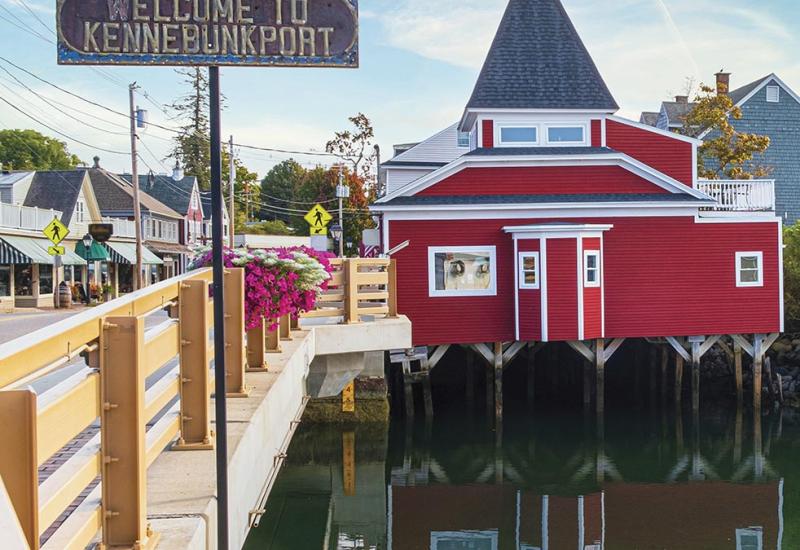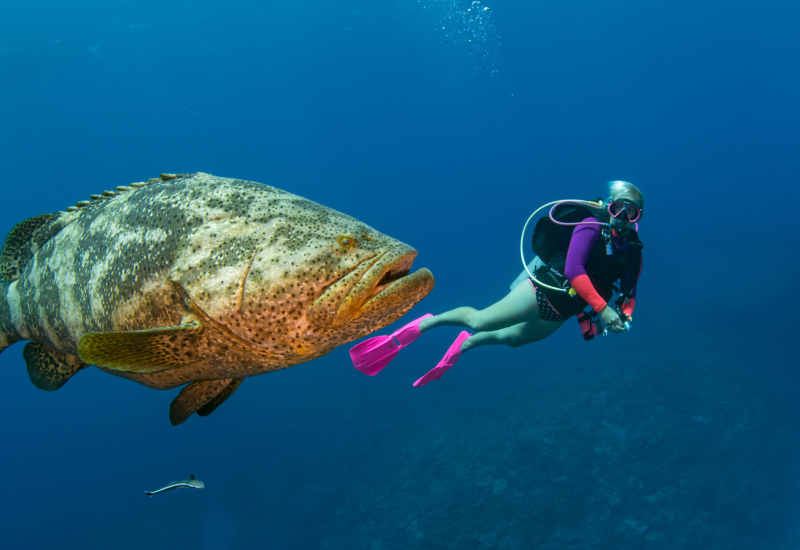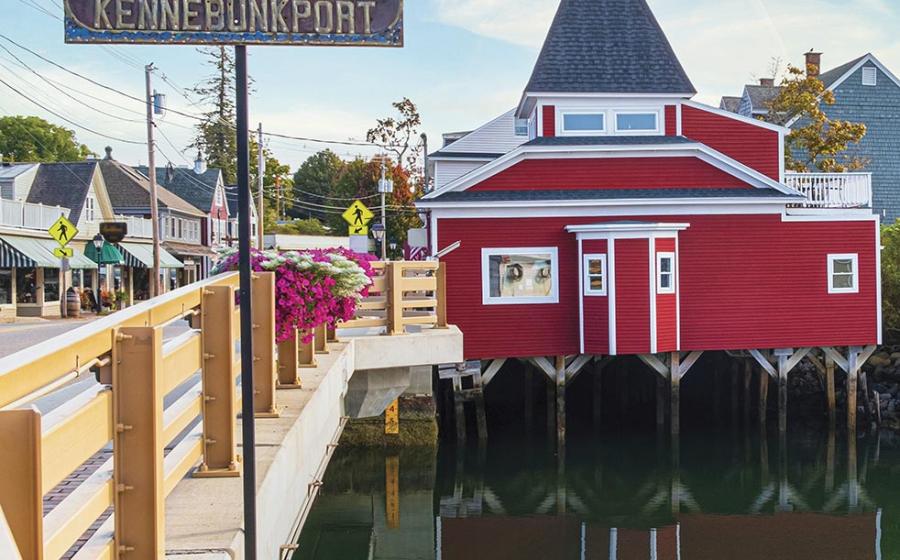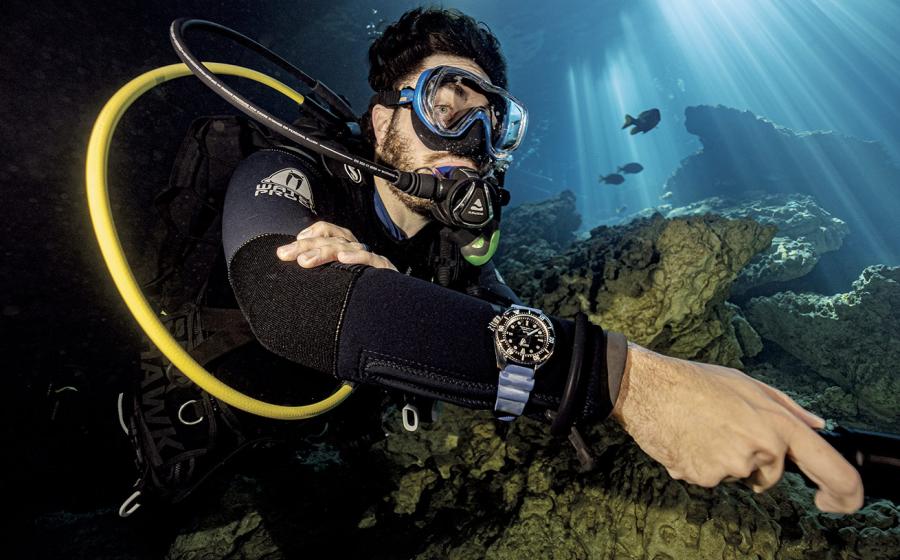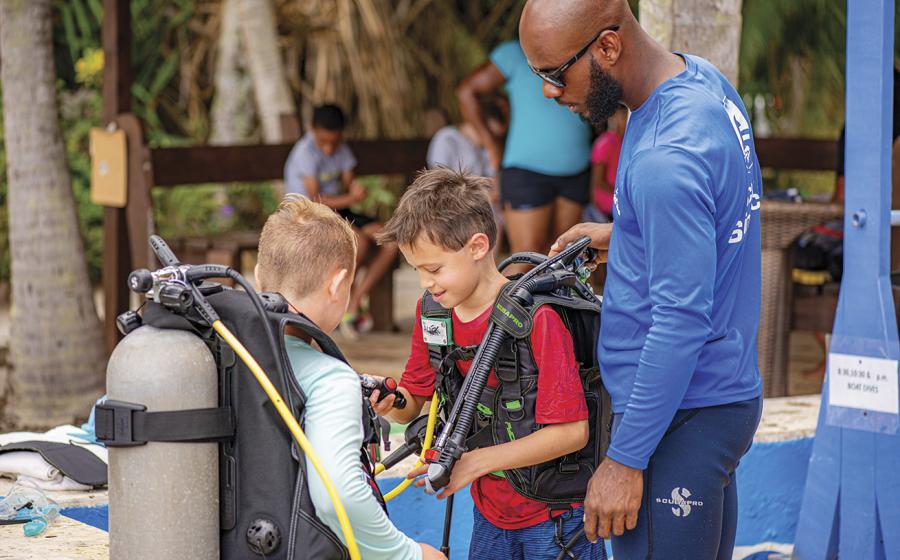A Complete Guide to Diving in Colombia
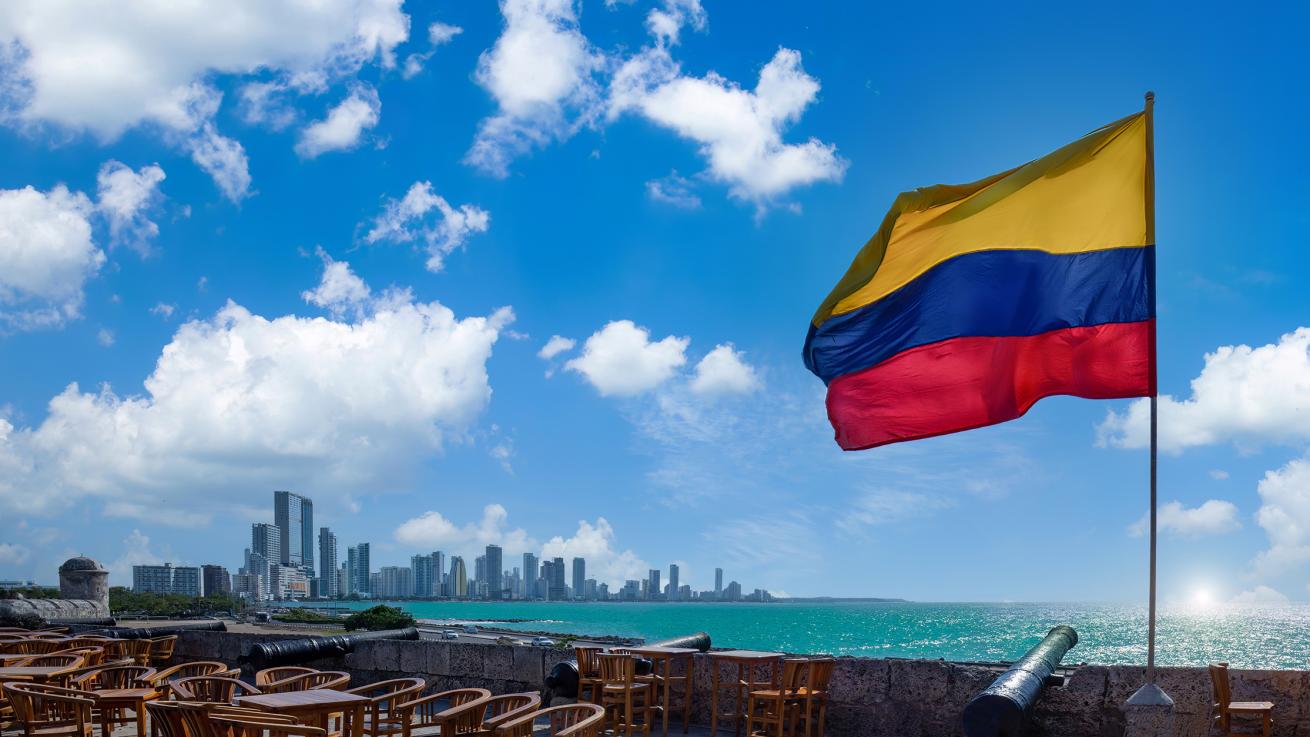
Shutterstock.com/eskystudioColombia is a must-visit destination for its topside attractions and underwater marvels.
When considering your next dive vacation, Colombia may not be the first country to come to mind, but it’s one that deserves your attention. With its crystal-blue waters, otherworldly landscapes, rich culture and mouthwatering cuisine, Colombia is a must-dive destination. Known as the "Country of Beauty," it stretches from the Pacific Ocean to the Caribbean Sea, offering six distinct regions ranging from arid deserts and Amazon rainforest to modern cities and pristine beaches.
A trending destination among land lovers, Colombia boasts quick, affordable flights from the U.S. and travelers are just beginning to discover that it’s also a world-class dive destination. Whether you're drawn to exploring the crystal-clear waters and vibrant reefs of San Andres, encountering schooling sharks at Malpelo, whale watching in Gorgona, or witnessing some of the last living pillar coral in Providencia, Colombia has something for every diver. Pack your bags with your wetsuit, camera and favorite dancing attire because you’re going to want to stay a while.
Here are the top dive destinations to explore in Colombia.
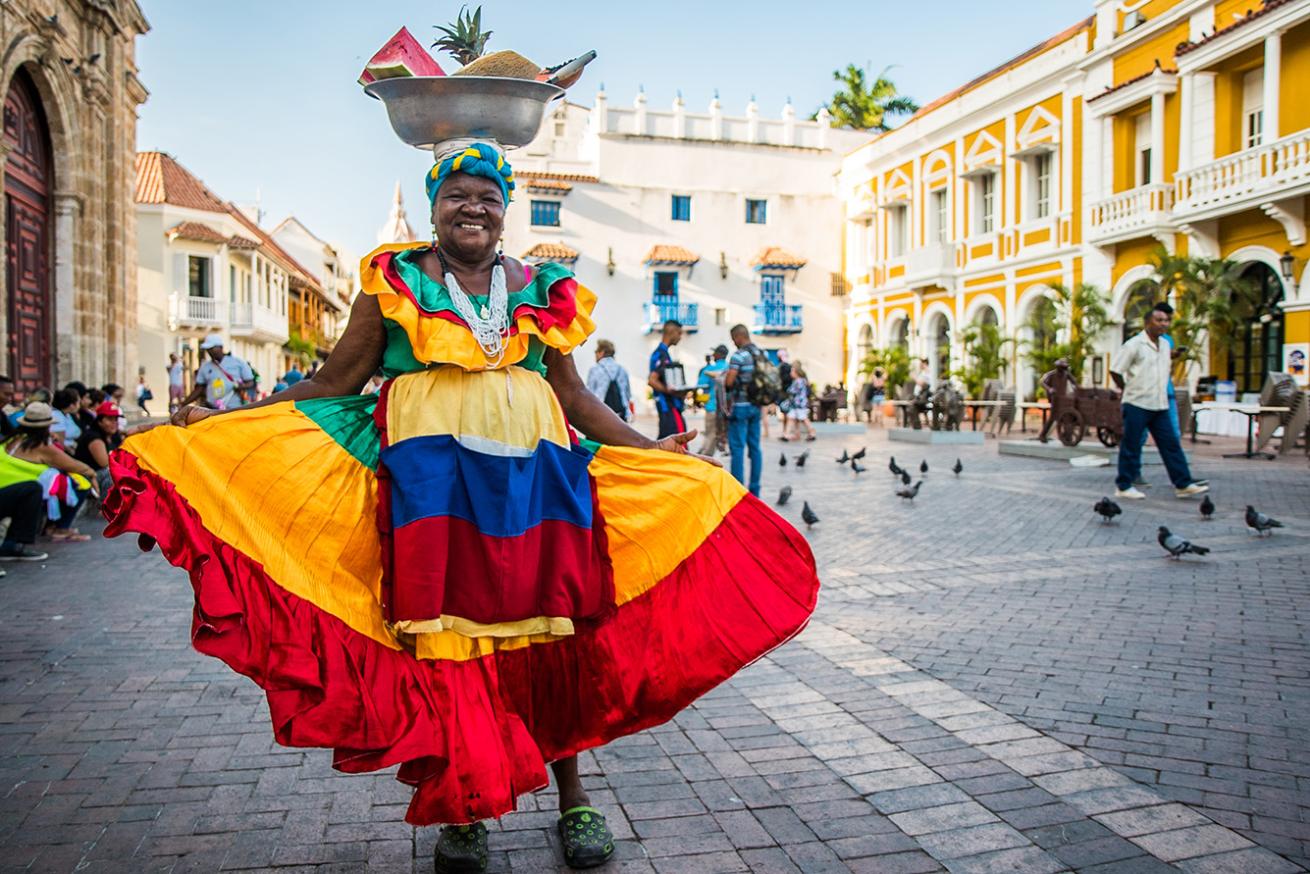
Courtesy ProColombiaCartagena and the nearby Rosario Islands offer more than 25 renowned sites and topside attractions for divers and nondivers to explore.
Diving the Greater Colombian Caribbean
Diving in Cartagena and Rosario Islands
Cartagena, Cartagena, Cartagena. If your friends are anything like mine, this is the top destination they’ve been raving about in recent years. With affordable flights from the U.S., welcoming locals and a vibrant culture that invites you to eat, dance and explore, it’s no wonder Cartagena is booming. Whether you’re stopping by on a cruise, planning a land-based adventure or booking a dedicated dive vacation, Cartagena and the nearby Rosario Islands offer more than 25 renowned sites for divers and nondivers to explore.
The diving here features a thriving barrier reef adorned with both hard and soft corals, along with seven shipwrecks waiting to be explored. Sharpen your Caribbean coral identification skills as you navigate the plateaus of elkhorn, staghorn and finger coral scattered around barrel sponges and graceful sea fans.
The diving in Cartagena is great for beginners and those eager to explore sunken barges, ships and airplanes—all accessible to open-water divers at depths ranging from 16 to 60 feet (5 to 18 meters).
Be sure to set aside at least one day to immerse yourself in Cartagena’s vibrant culture and visit the Port, Fortresses and Group of Monuments, a UNESCO World Heritage Site. A day spent walking around the neighborhood of Getsemani, the historical center and then to Santa Catalina Cathedral will ignite your senses.
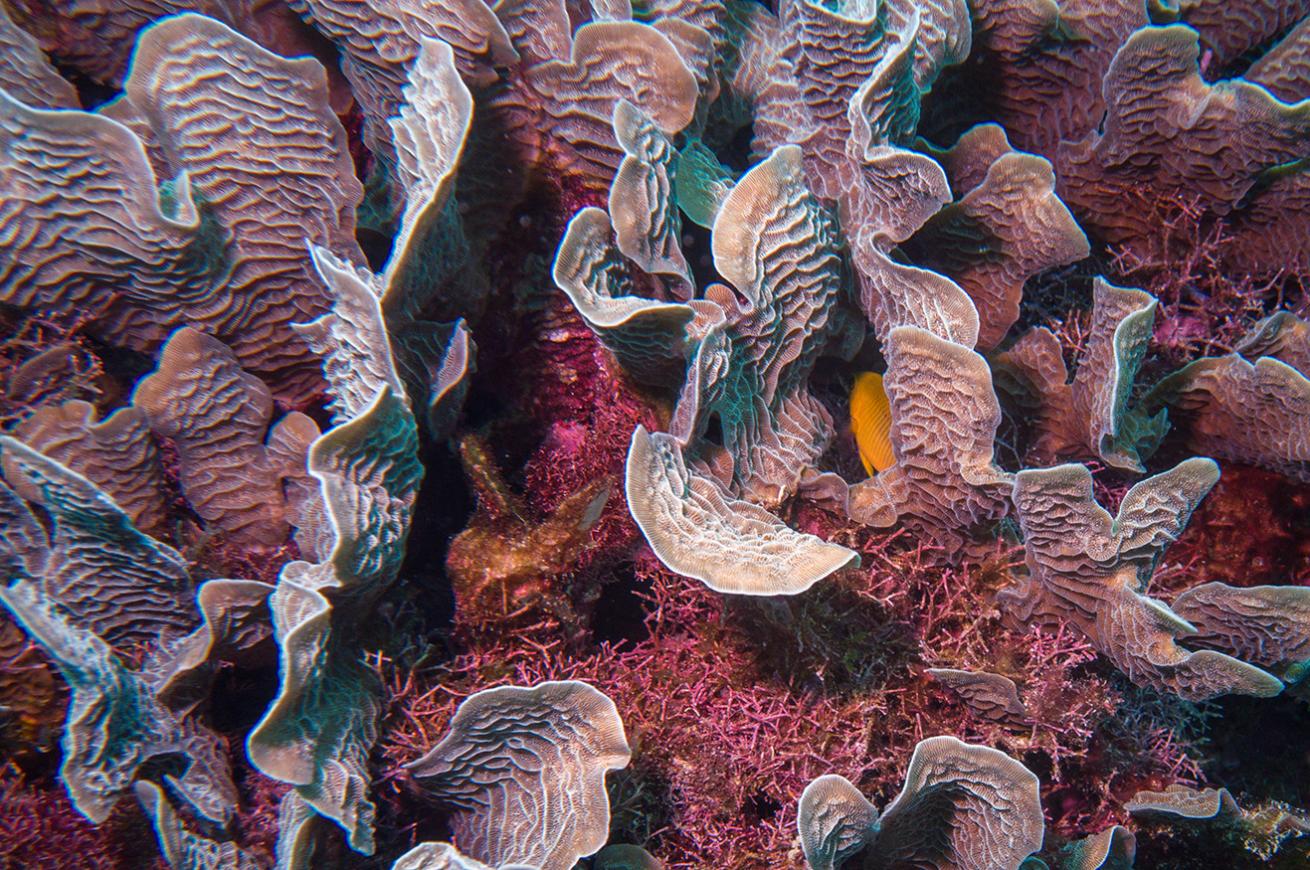
Shutterstock.com/DanVanPeltWhite ridge coral off the Rosario Islands, Colombia.
Need to Know
When to Visit
Visitors will enjoy diving throughout the year. Currents are milder during the rainy season (July to October), but visibility may decrease to 32 feet (10m) due to river sediment.
Water Temperatures
Average water temperature is 85 degrees Fahrenheit (29 degrees Celsius) year-round.
What to Wear
With warm waters divers can get away with a swimsuit or shorty, but if you tend to get cold or like to protect your skin from sun or stings, wear a 3mm wetsuit or a dive skin.
Must-Try Local Dish
Arepa de huevo, posta Cartagenera (Colombian-style beef) and coctel de camarones (shrimp cocktail)
PADI Operators
Related Reading: Erika Lopez Named 2024 Sea Hero of the Year
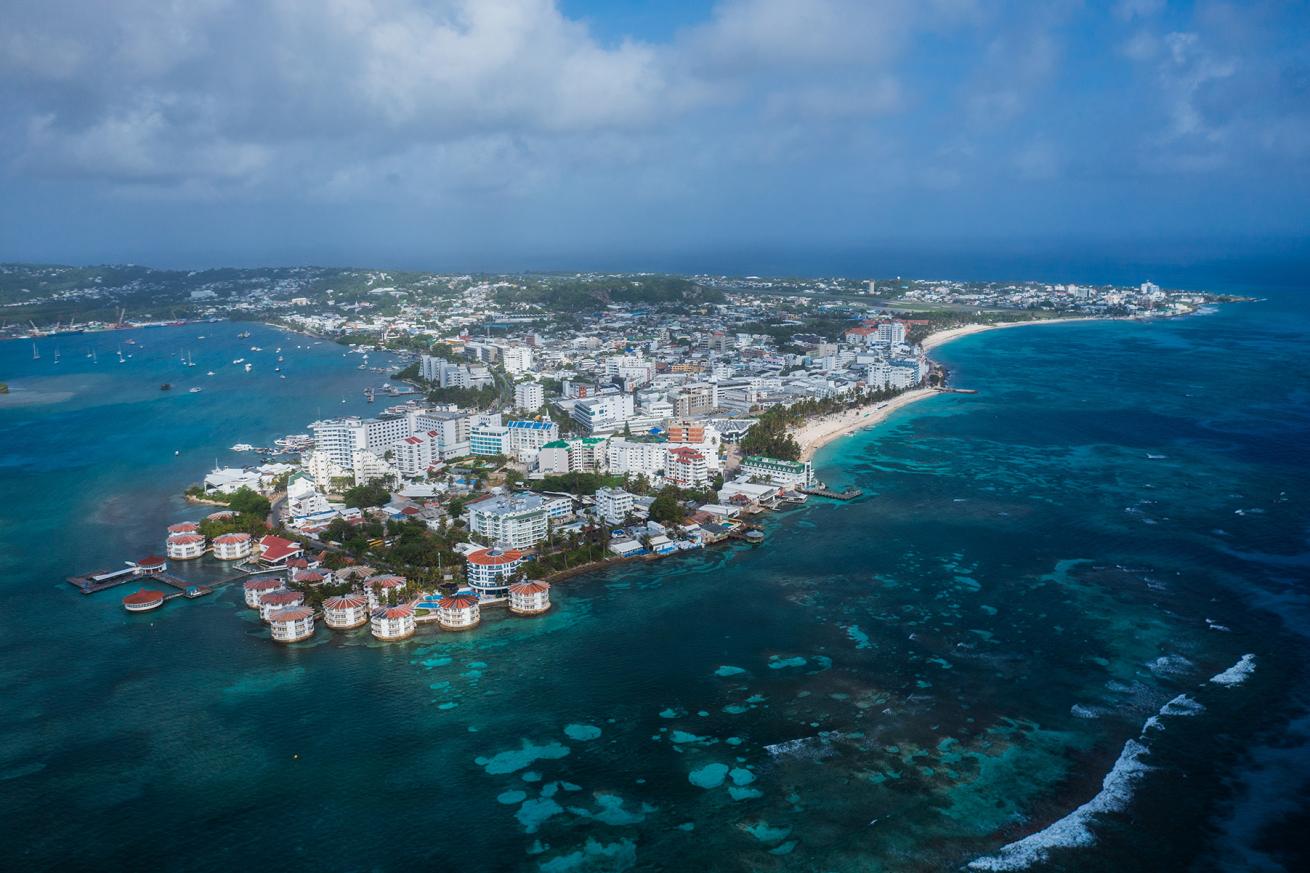
Courtesy ProColombiaThe islands of San Andres, Providencia and Santa Catalina are over 400 miles from the Colombian mainland.
Diving in San Andres, Providencia and Santa Catalina
The archipelago of San Andres, Providencia and Santa Catalina is like taking your first sip of strong Colombian coffee and then dozing off on a beach to the rhythm of reggae and swaying palm trees. Although part of Colombia, these islands sit closer to Nicaragua, blending Afro-Caribbean and Hispanic cultures into a dream destination for anyone seeking relaxation, adventure, culture or fiesta.
The largest of the islands is San Andres, known for its flat, limestone-coral landscape and vibrant atmosphere. In contrast, nearby Providencia is a volcanic island covered in dense tropical forest and far less developed. Both islands boast crystal-clear water but have their own unique vibes. San Andres is perfect for all travelers, welcoming both novice and advanced divers with various lodging options, including luxury hotels and local posadas. Providencia is ideal for adventure travelers seeking to reconnect with nature and unplug. The island archipelago was designated as the Seaflower Biosphere Reserve in 2000—the first marine protected area in the country.
Nicknamed the Sea of Seven Colors, the heavenly waters surrounding San Andres have over 40 dive sites to explore. San Andres—the flatter of the two islands—is renowned for its easy shore dives and wonderful macro life. This island is ideal for visitors of any level—from those learning to dive, those interested in deep wrecks or wall diving and those looking to give back through coral restoration programs. For topside fun, check out Jonny Key and La Regata Restaurant—but make your reservation in advance!
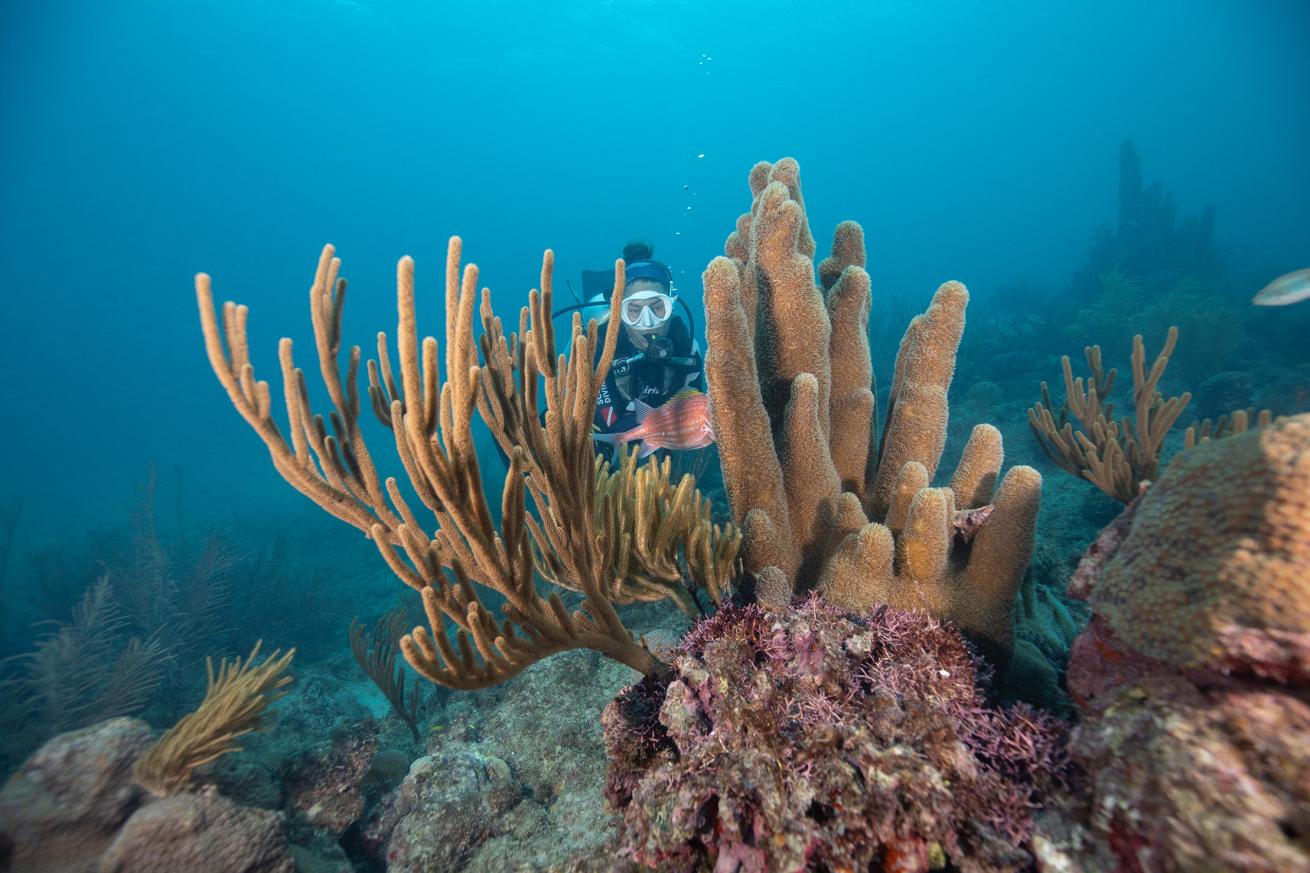
Kristin PaterakisPADI Ambassadiver Karol Yela observes an endangered pillar coral at Tete's Place in Providencia, Colombia.
Despite their close proximity, the diving and topside experiences are different due to the geological history. Providencia is a volcanic island and caters to travelers seeking adventure, disconnecting from society and immersing oneself in the roots of nature and culture. The island's waters are home to dramatic underwater landscapes, sheer walls that plunge into the deep, plateaus of endangered pillar coral and an abundance of marine life. Divers can witness friendly Caribbean reef sharks at almost every dive site. Though still in its early stages, the island’s community is dedicated to conservation, with recent efforts focused on sea turtle protection, as well as mangrove and coral restoration.
Take a boat ride to explore the small islands surrounding Providencia, including Crab Key, located inside the McBean Lagoon National Nature Park. Topside, one can enjoy learning about the indigenous Raizal culture, trek to the top of the highest point of the island, indulge in fresh fruit and watch the beach horse races.
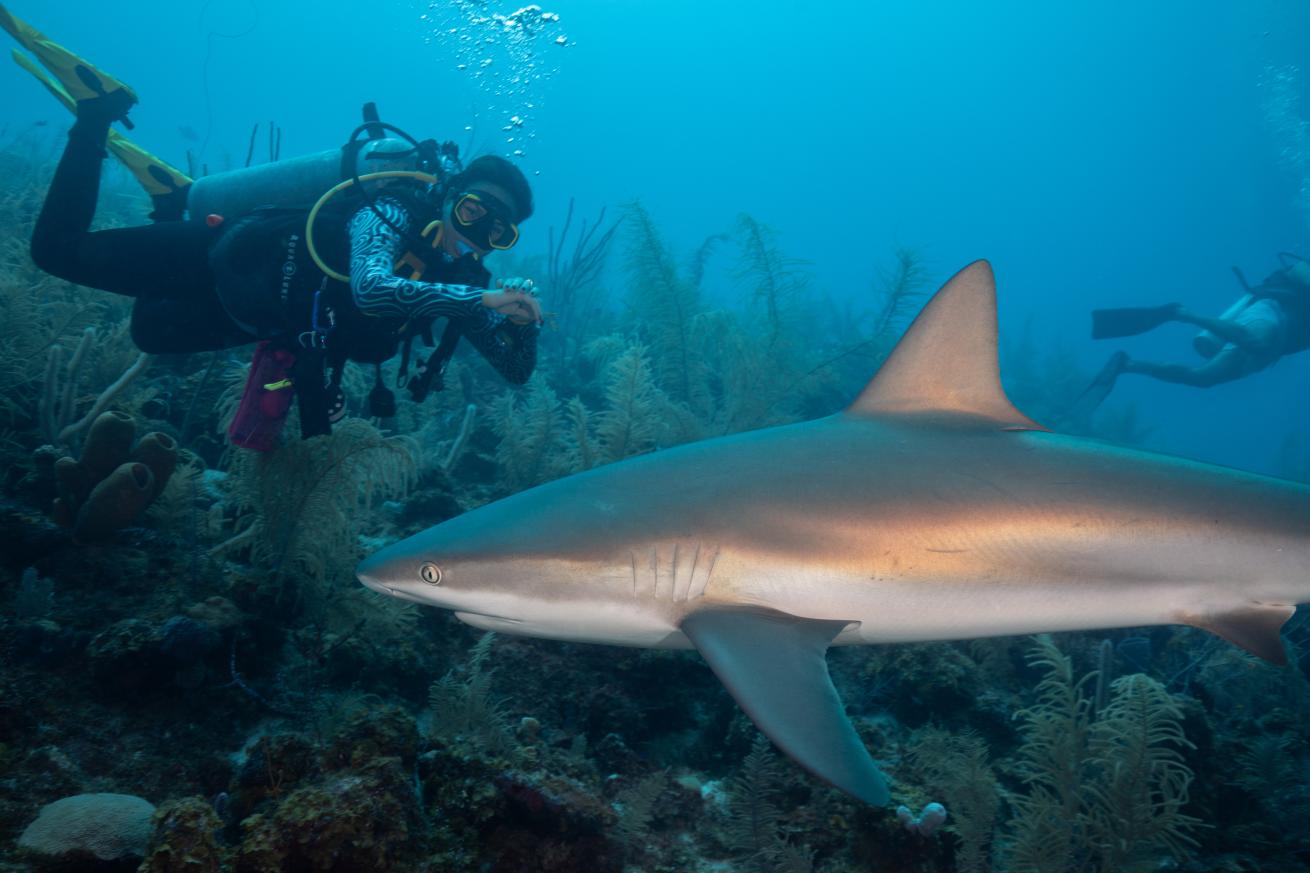
Kristin PaterakisCaribbean reef sharks are one of the main attractions for divers visiting Providencia, Colombia.
Need to Know
When to Visit
The dry season is from December to May and is the best time to travel. However, during the rainy season, the rain is not heavy or constant, so traveling between June to November is still pleasant.
Water Temperatures
Average of 80 degrees Fahrenheit (26 degrees Celsius).
What to Wear
With warm waters, divers can get away with a swimsuit or shorty, but if you tend to get cold or like to protect your skin from sun or stings, wear a 3mm wetsuit or a dive skin. Bring a hat and a windbreaker to use between dives.
Must-Try Local Dish
Rondón (seafood soup cooked with coconut), crab backs
PADI Operators Providencia
PADI Operators San Andres
Related Reading: The Black Sea Turtle's Great Comeback
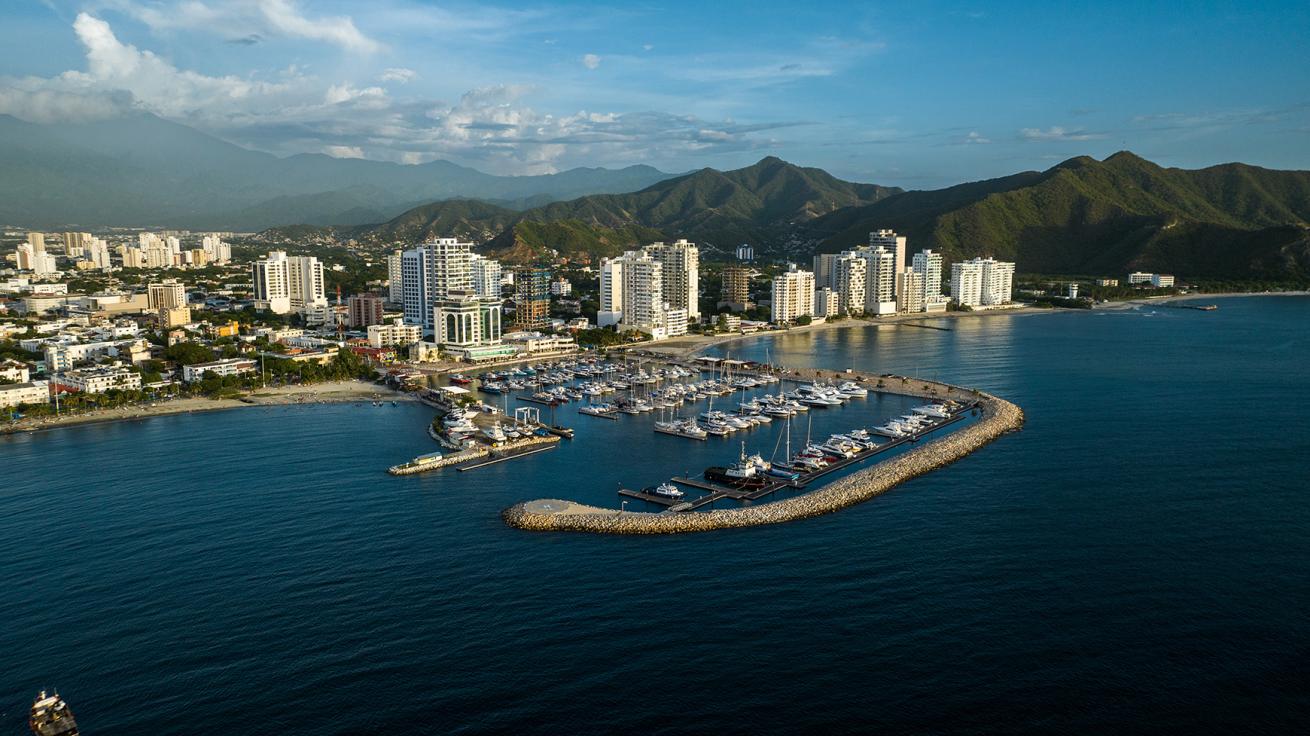
Courtesy ProColombiaThe protected shallow coves of Santa Marta make this location perfect for beginner divers.
Diving in Santa Marta and Tayrona
The Sierra Nevada de Santa Marta mountains meet the sea in northwest Colombia creating a breathtaking backdrop of diverse ecosystems and climates. Home to over 120 endemic plant species and 44 of Colombia’s 340 endemic animal species, this destination is a paradise for biodiversity lovers.
Protected shallow coves make diving in Santa Marta and Tayrona perfect for beginners and those learning to dive. Most sites are just a short distance from shore and as shallow as 7 feet (2 meters), but advanced divers can also explore wrecks, caves, walls and schooling pelagic fish at depths up to 130 feet (40 meters).
No visit to Santa Marta is complete without exploring Tayrona National Natural Park, located just 21 kilometers from the city. Tayrona is a sacred land consisting of four indigenous communities of the Sierra Nevada. Renowned for its cultural heritage and unique blend of coastal rainforest and marine ecosystems, the park is a hotspot for ecotourists. Underwater, it boasts five species of sea turtles, vibrant coral formations and 350 species of algae. There are a number of different sites, but don’t miss Aguja! On land, nature enthusiasts can search for all 36 species of bats that call this region home.
Additional topside destinations to visit include Minca and Lovers' Park.
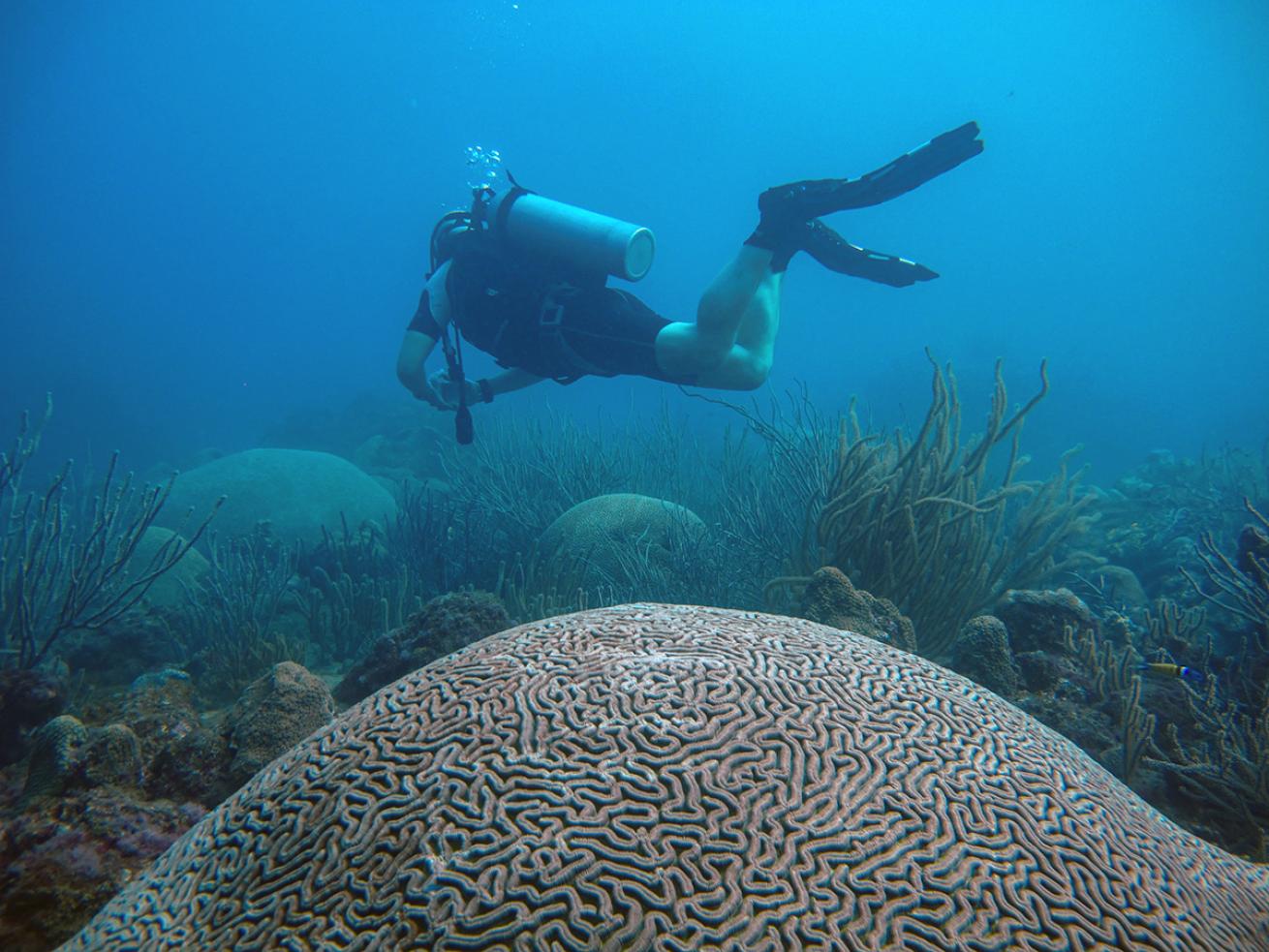
Shutterstock.com/Diver-adventuresLarge brain coral can be found at Tayrona National Natural Park.
Need to Know
When to Visit
Parque Tayrona offers a great number of different dive sites, Aguja is one of the ones that you should not miss.
Water Temperatures
Windy season is December to April, causing the water to cool to 70 degrees Fahrenheit (21 degrees Celsius). Even though there’s wind, it’s when you’ll experience the best visibility. The rest of the year, temperatures range from 75 to 85 degrees Fahrenheit (24 to 30 degrees Celsius) and visibility from 30 to 45 feet (10 to 15 meters).
What to Wear
Depending on the season, a light wetsuit or skin or a 5 mm wetsuit with hood and gloves.
Must-Try Local Dish
Local fresh fish of the day and fresh fruit juices, especially tamarind, passion fruit and corozo (a small reddish South American palm fruit)
PADI Operators

Shutterstock.com/DavidAOtaloraAn abandon prison at Gorgona Island.
Diving the Colombian Pacific
Diving in Gorgona
Once a prison island often referred to as the “Colombian Alcatraz,” Gorgona is now renowned for its stunning views above and below. Famous for its shipwrecks, marine megafauna and vibrant coral walls, this island on Colombia's Pacific coast is a must-visit destination. Accessible by boat, this biodiversity hotspot is home to 381 species of marine fish, 237 species of mollusks, 12 species of coral, 11 species of whales and dolphins, 10 species of sharks and numerous endemic species on land, making it a place of endless wonder. Each dive site is unique, with stunning schooling fish, whitetip reef sharks or black coral—all to witness while hearing the mystical song of humpback whales as a soundtrack to your dive.
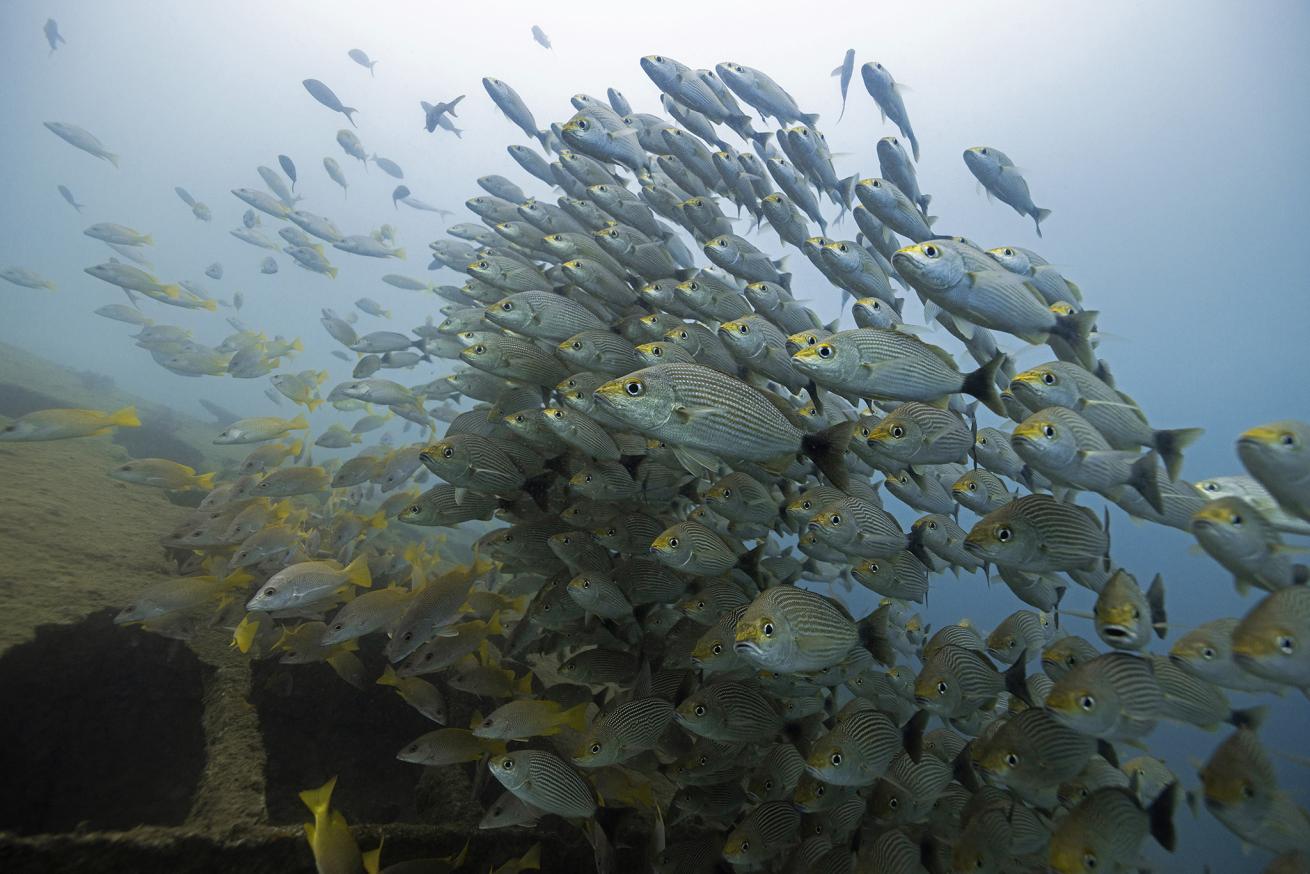
Juan MoraWreck diving in Gorgona is complete with schooling jacks.
This destination is suitable for both beginners and advanced divers, although the waters are a bit cooler than in the Caribbean. When topside, travelers can enjoy a hike through the jungle, and witness nature’s power to reclaim the remnants of the prison that once existed—a harmful history being reforested with beauty.
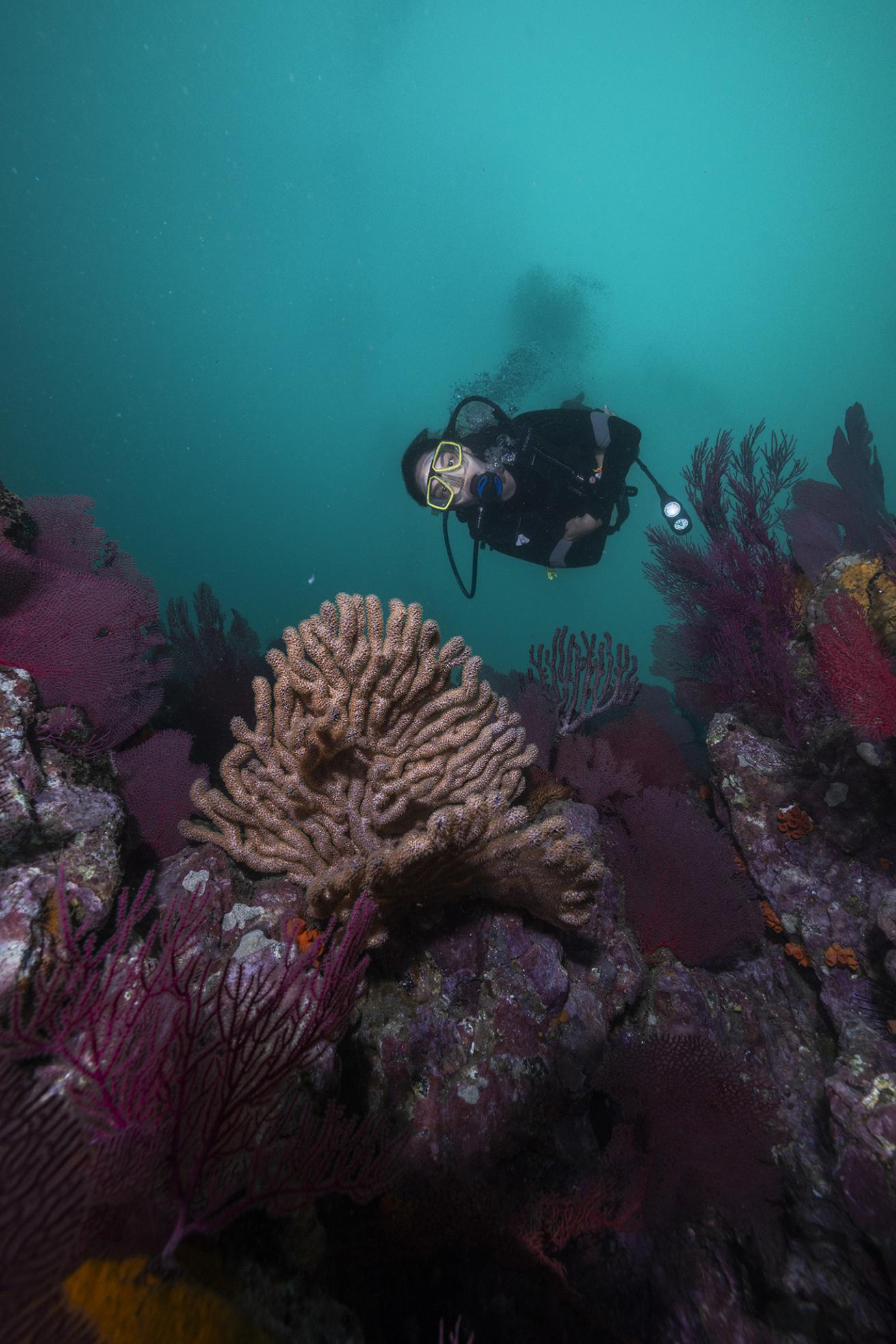
Juan MoraThe nutrient rich waters off Gorgona Island are habitat to stunning soft corals and even migrating whales.
Need to Know
When to Visit
Diving is year-round, but if you want to see whales, book your travel between July and November. Divers may get the chance to see whale sharks between May and June.
Water Temperatures
Ranges from 68 to 84 degrees Fahrenheit (20 to 29 degrees Celcius) depending on the time of year.
What to Wear
Depending on the season, a light wetsuit or skin or a 5 mm wetsuit with hood and gloves.
Must-Try Local Dish
Pinagua rice, fresh tuna, tamal, fish stew
PADI Operators
Related Reading: Dominican Republic's Humpback Haven

Shutterstock.com/Nicholas BillingtonMore than 300 miles off Colombia’s coast, Malpelo is a vital refuge for hammerheads, silky sharks, grouper and billfish—and a bucket-list dive destination.
Diving in Malpelo
A remote island archipelago accessible only by a 36-hour liveaboard journey, Malpelo has earned its place at the top of many experienced divers’ bucket lists. Advanced certification is required due to the deep dive sites, strong currents, waves and open-water conditions. Proper preparation is essential to fully enjoy this challenging yet rewarding destination.
Malpelo is the place to go for schooling sharks, large pelagic fish, steep walls and stunning caverns. With over 1,315 species recorded to date, including 10 endemic species (five terrestrial and five marine), the island offers an unmatched diversity of marine life.
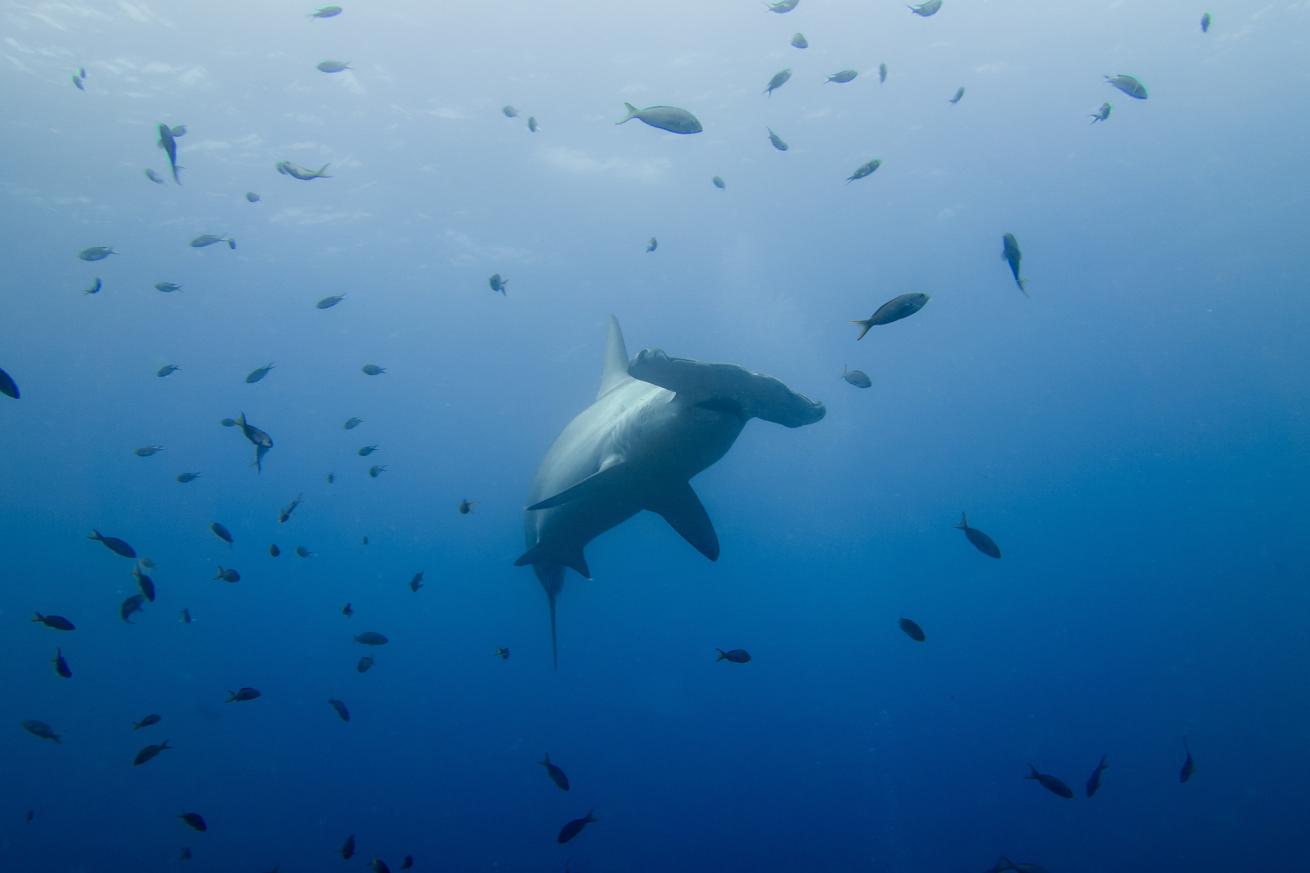
Shutterstock.com/HakBakMalpelo is one of the top diving sites in the world to see a variety of pelagic species of sharks including hammerheads.
Need to Know
When to Visit
The water temperature between December and April is lower, increasing your chances of encountering schools of sharks in shallow water, including the Malpelo shark (Odontaspis ferox.) Silky shark and whaleshark sitings are often during the warm water periods, between May and November.
Water Temperatures
The cool waters from January to April reach temperatures around 74 degrees F (23 C) with visibility averaging 45 feet (15 meters). May to December is the rainy season, with warmer waters (80 degrees fahrenheit (27 Celcius)) and visibility up to 100 feet (30 meters).
What to Wear
Depending on the season, a light wetsuit or skin or a 5 mm wetsuit with hood and gloves. We recommend bringing a reef hook and a marine rescue GPS due to the remote location and strong currents.
PADI Operators

